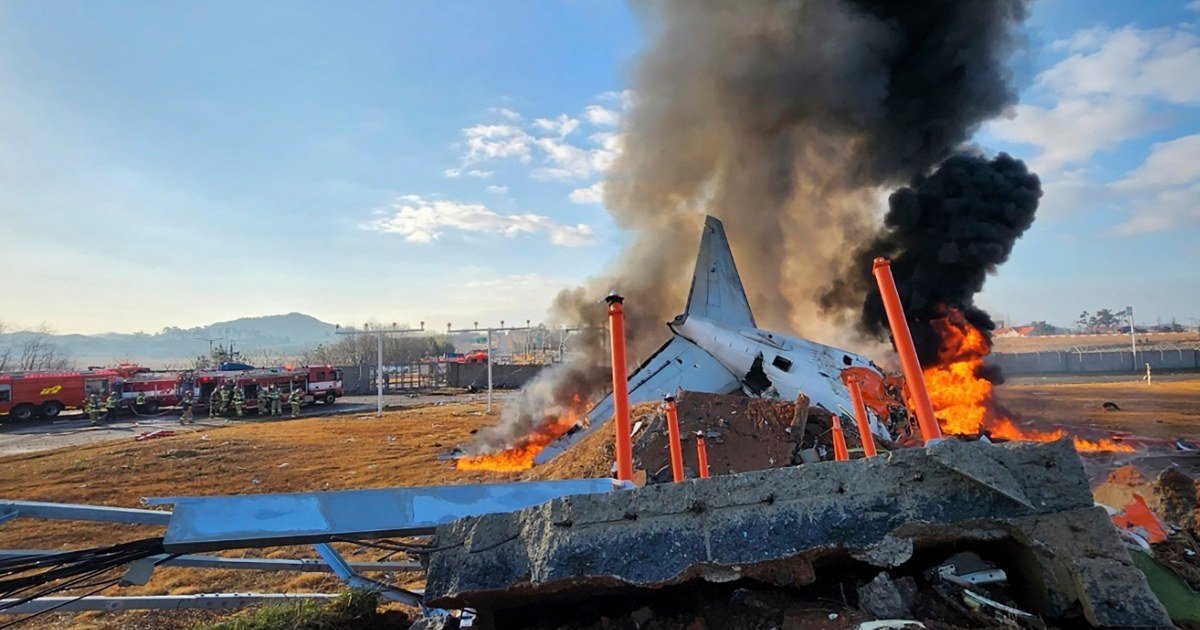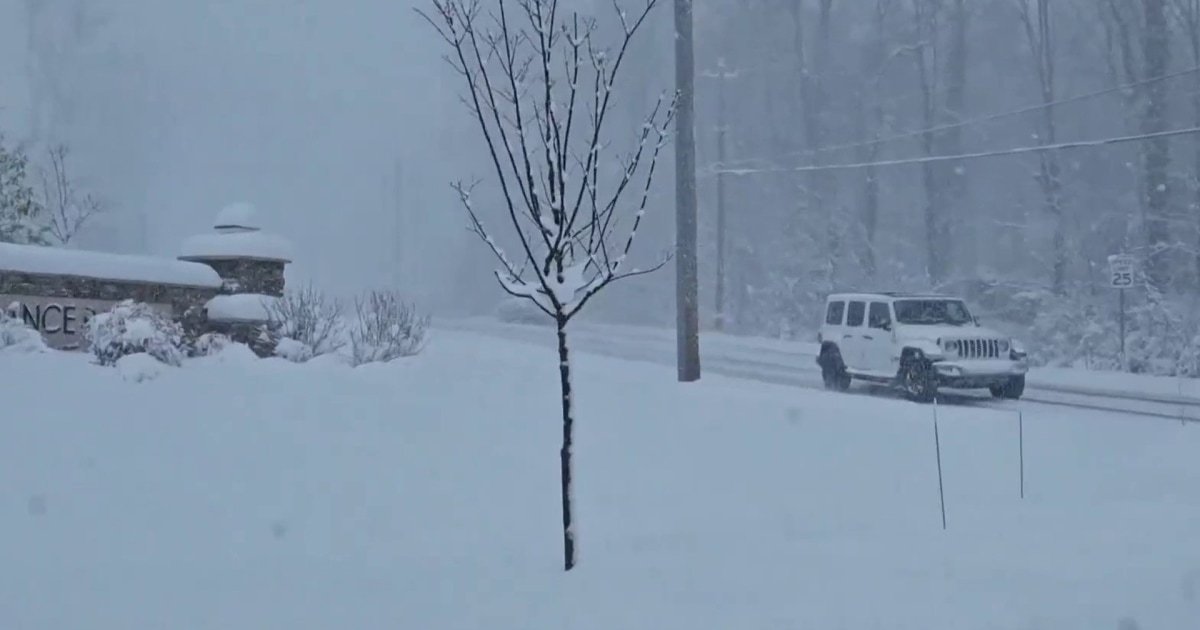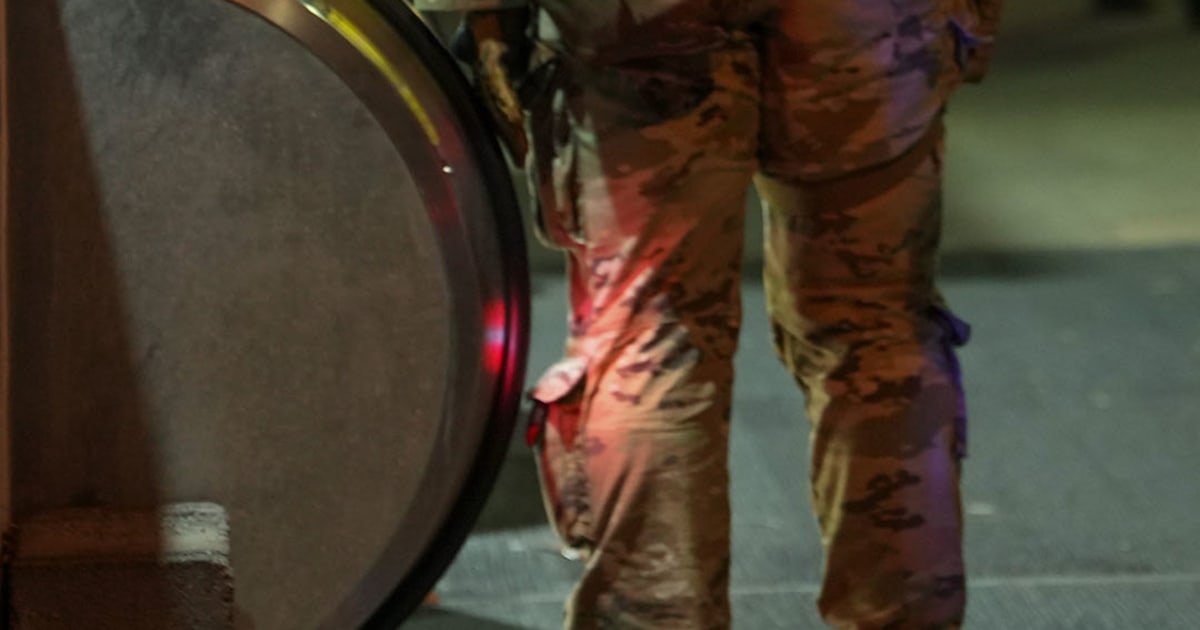A major investigation was underway Monday after 179 people were killed in the deadliest plane crash ever in South Korea when a plane landed at Muan International Airport on Sunday before skidding into a wall and bursting into flames.
Questions remain about what exactly caused Jeju Air Flight 2216 to crash and why the death toll was so high, with only two survivors.
Hundreds of relatives camped overnight at Muan County International Airport, desperate for answers about what happened to their loved ones and demanding to see their remains.
Here’s what we know so far about the fatal crash and the investigation into its cause:
What happened?
Jeju Air Flight 2216 took off from Bangkok shortly after 2 a.m. local time (2 p.m. ET on Saturday), according to flight tracking platform FlightAware.
At around 8:59 a.m. (6:59 p.m. ET on Saturday), the pilot of the Boeing 737-800 aircraft issued a “bird strike” warning used to warn of a collision between at least one bird and a plane, before to declare “Mayday,” Yu Kyung-soo, Director of Air Safety Policy at South Korea’s Ministry of Land, Infrastructure and Transportation (MOLIT), said in a briefing on Monday.
“The plane then made a turn and at 9:01 a.m., it was cleared to enter runway 19,” Yu said. Just a minute later, the plane landed at the one-third point, or nearly 4,000 feet, of the runway, he said, but after about a minute, it went off the runway and collided with a wall, Yu said.
The incident occurred just minutes after the airport control tower issued a bird activity warning at 8:57 a.m., Yu added.
In video captured of the crash, the plane could be seen landing at Muan International Airport and sliding down the runway before crashing into a wall and bursting into flames. The video appeared to show that some or all of the plane’s landing gear did not deploy.
South Korea’s national fire agency confirmed that 179 people died in the crash, making it the deadliest air disaster of the year and what appears to be Jeju Air’s first fatal crash since the low-cost airline was founded. cost in 2005.
What caused the accident?
There is still no definitive answer as to what exactly caused the accident.
The NTSB is expected to send a U.S. investigative team to assist with the probe, and consultations are also underway with Boeing, the aircraft manufacturer, and CFM International, a U.S.-French joint venture that made the plane’s engine. officials said in a briefing. on Mondays.
Two black boxes recovered from the plane, the flight data recorder and the cockpit voice recorder, were moved to a testing center Monday morning.
Investigators are investigating whether a flock or a single bird was responsible for the plane’s apparent loss of control. The pilot reported a bird strike and the incident unfolded minutes after the Muan International Airport control tower issued a bird activity warning.
They are also investigating the fact that the plane crashed into the outer wall of an azimuth or localizer facility, Ju Jong-wan, director of MOLIT’s Aviation Policy Office, said at a briefing on Monday.
“The azimuth installation cannot be installed arbitrarily; there are installation standards that we are currently reviewing,” Ju said.
What we know about the victims
A total of 181 passengers, including young children, and crew members were on board the flight when it crashed.
Most of the passengers are believed to have been Korean, but at least two were Thai, Ju said.
At least 84 of the dead were women and 82 were men, authorities said.
At least 11 of the dead were elementary, middle and high school students, South Korea’s Education Ministry said Monday. At least four were enrolled in elementary school, three in middle school and four in high school.
“One of the victims was identified as a preschooler born in 2021 and attending a daycare center,” said Education Ministry spokesperson Gu Yeon-hee.
Grieving relatives of those killed in the crash have gathered at Muan airport demanding answers about what happened to their loved ones and to see their bodies.
The families formed a group led by Park Han-shin, who lost his brother in the accident.
On Monday, Park issued a series of demands on behalf of the families, including that Jeju Air cover the costs of funeral services for the deceased and that a memorial be established for the victims inside the airport.
The Seoul city government said Monday it will set up a joint memorial altar for the victims and minimize or cancel year-end events during the national mourning period.
Park also said more freezer containers were needed at the airport to preserve crash victims. Lack of space to store bodies is a growing concern among grieving families.
Ultimately, Park said families would need answers about what exactly happened to their loved ones, as well as compensation for their loss.
“There is a need to clearly establish what went wrong, why it went wrong and assign appropriate compensation and procedures accordingly,” he said.
the survivors
Two people, a man and a woman, both members of the flight crew, survived Sunday’s crash. Both suffered moderate injuries but were conscious, Ju said.
South Korea’s Yonhap News Agency identified one of the survivors as a 33-year-old flight attendant who suffered multiple injuries, including fractured ribs and traumatic spinal injuries, according to Ju Woong, director of Women’s University Hospital. Ewha from Seoul.
“When I woke up, I had already been rescued,” said the flight attendant, identified only by her last name, Lee, according to Ju Woong. They were in intensive care but could communicate well.
“There is no indication of memory loss or anything yet,” Ju Woong said.
New security measures
Authorities have already announced plans for new security measures.
A special investigation will be launched into the Boeing B737-800 aircraft model, MOLIT reported on Monday.
The aircraft model is widely used by domestic low-cost airlines, with Jeju Air operating the largest number with 39 aircraft. Other operators include T’way Air, Jin Air, Eastar Jet, Air Incheon and Korean Air.
“We will examine compliance with various regulations, including operational records, inspections and maintenance performed before and after flights,” Ju said.
He said a review of bird strikes and regulations aimed at reducing such incidents would also be carried out.
“For new airport projects, we will closely examine bird strike issues and develop complementary measures with experts,” he added.








